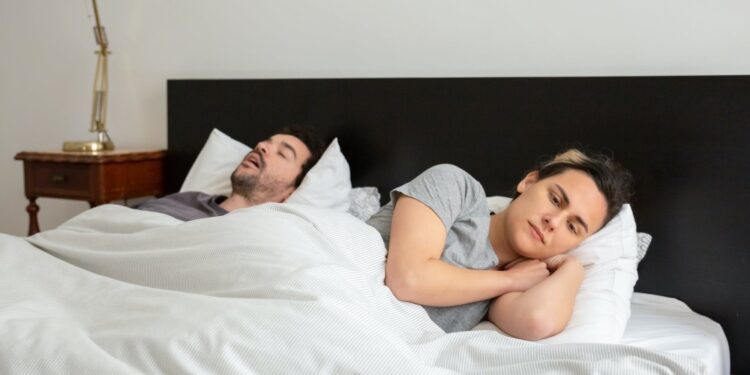The Australian Sleep Health Foundation performed a study and found that 40% of respondents were bothered by their partner’s snoring. A whopping 95% of those who have snoring issues also use a snoring device. When people snore, it may lead to various health problems, including excessive daytime drowsiness and an increased risk of heart disease. Sleep apnoea, which causes loud snoring, can be a sign of snoring as well. If they don’t work, mandibular advancement devices and surgery are the primary treatments for treating or managing snoring.
What leads to snoring?
Snoring may be caused by a variety of factors. Sound waves are nothing more than air vibrations propagated as a signal. The tissues in the throat make a snoring sound when someone snores. Swallowing produces vibration in the orifice because the airway muscles loosen up as you sleep. Body morphology, like the size and shape of your nose, tongue, and throat, all affect the quality of your voice.
What factors should you consider while looking for an anti-snoring device?
Identifying the source of snoring can help you narrow down your options for a snore-relieving gadget. Finding out what’s causing the snoring is critical. It doesn’t matter whether it’s because of congested nasal passages or because of the architecture of the throat. Even though these may be self-diagnosed, it is always best to get medical assistance. By preventing vibrations and therefore snoring, anti-snoring gadgets aim to maintain your top neck muscles (the airway channel) in the optimum position.
What are the types of Anti-Snoring Devices?
The following list outlines the major types of devices and how they operate.
- Devices to Advance the Mandible: Mouthpieces and mouth guards are two standard oral hygiene products. Custom-made to fit inside the jaw, these devices help with breathing as you sleep—the gadget aids in moving the jaw forward, which opens up the throat’s airway. As a result, the upper airway tissue vibrates less, which prevents snoring. As a bonus, it makes it easier to breathe. Those who snore because of anatomical reasons may consider this treatment. People with sleep apnea may also benefit from the snoring device. The fact that it reduces teeth grinding when you’re asleep is an additional advantage of this product. Getting accustomed to wearing a smartwatch is similar to getting used to wearing anything else worn on the body.
- Mouthguards and Other Mouth Stabilizing Devices: These pacifier-like objects resemble those often seen in the care of young children. The tongue is put into a hollow protrusion on the plastic device, placed on your lips like a pacifier. When used while sleeping, it helps move the tongue forward to avoid obstructing the airway. As long as you have a tongue that is longer than your teeth, you may use it. Also, it has to be warmed up in hot water before using it.
- Nasal strips or plugs: Rather than nasal plugs, nasal strips are tiny, band-aid-like strips that are inserted into the nostrils and left in place. Both of these improve breathing comfort by widening the nostrils. However, it should be emphasised that this only works for individuals who snore because their nasal passages are too tight and are not appropriate for people who snore because of their throat. As a result, nasal strips are only suitable for one usage, and as a result, they may be expensive over time.
Other devices, such as chin-up bands and pillows, operate on the same concept as mouth guards by pushing the jaw forward to allow for better breathing and a wider airway channel.










